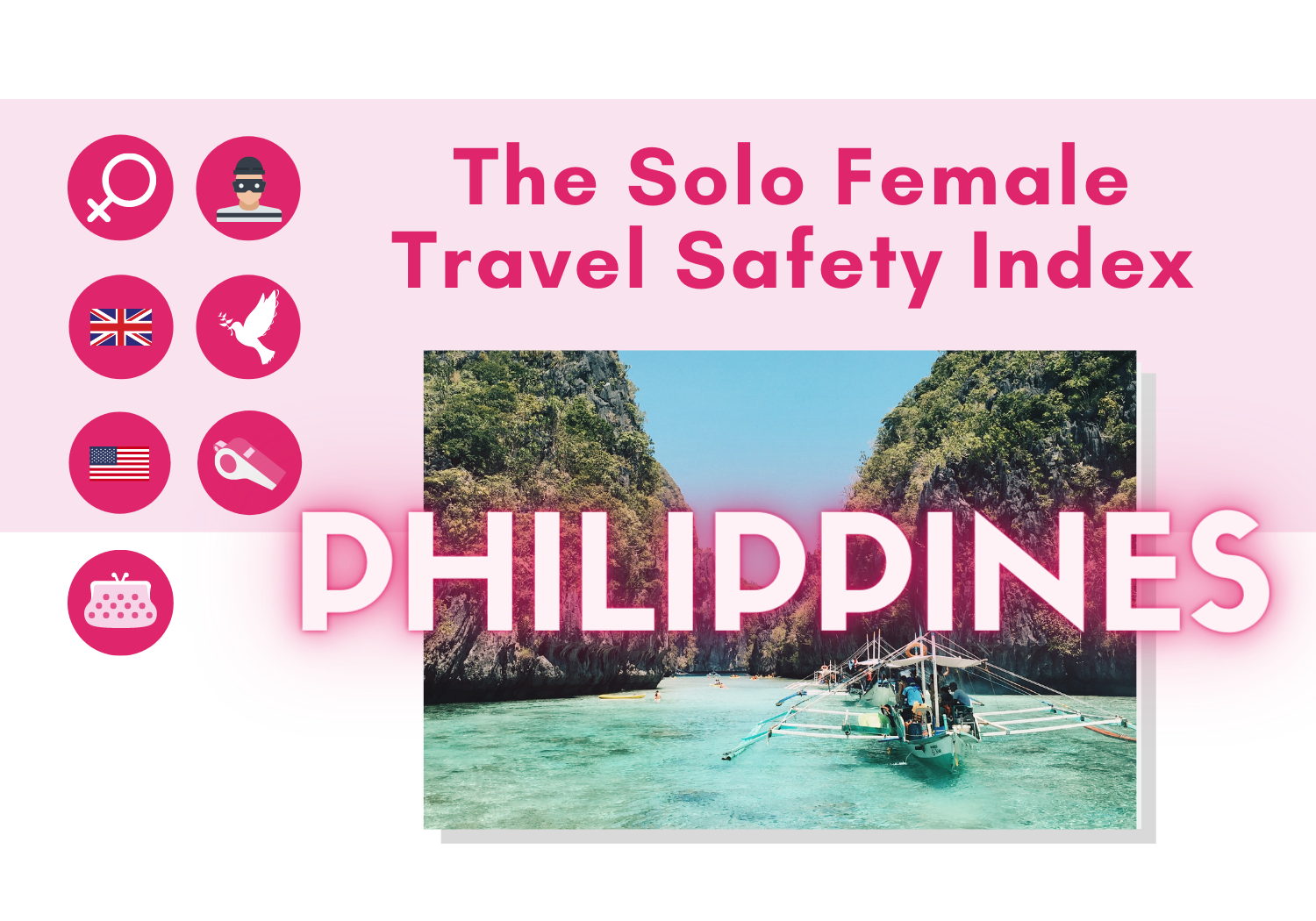This post may contain affiliate links. For full information, please see our disclaimer here and our Privacy Policy here.
Welcome to the Solo Female Travel Safety Tips and Advice page for Philippines!
This page is brought to you by Solo Female Travelers Tours, our curated small group trips for women, by women.
On this page you will find first-hand, unbiased, and real safety tips, advice and reviews from women traveling solo, submitted directly from their personal experiences in the country.
Their opinions are unfiltered and submitted independently as part of the Solo Female Travel Safety Index, a ranking of 210 countries and regions based on how safe they are for women traveling solo.
The safety scores range from 1 to 4 with 1 being the safest and 4 being the most dangerous for solo female travelers.
You don’t need to login to read the below reviews. But do sign up or login to share your solo travel experiences, country safety rating and comments.
Jump straight to: Travel Tips | About the Index | Resources I Leave a Review
MAKE A DIFFERENCE – LEAVE YOUR SAFETY REVIEWS!
We can make the world a safer place for women traveling solo together. Sign up to our portal and leave your reviews NOW. Share your experience with other solo female travelers and help us empower more women through travel.
Philippines Country data
We have compiled a few data points below that can help you better understand Philippines and have more context when thinking about travel safety.
Official country name: Republic of the Philippines.
Etymology: Named in honor of King Phillip II of Spain by Spanish explorer Ruy Lopez de Villalobos, who visited some of the islands in 1543.
Country map

Locator map

Flag

Capital: Manila.
Independence / foundation: The Philippine Islands became a Spanish colony during the 16th century but the islands were ceded to the US in 1898 following the Spanish-American War.
In 1935 the Philippines became a self-governing commonwealth. In 1942 the islands fell under Japanese occupation during World War II, and US forces and Filipinos fought together during 1944-45 to regain control. On 4 July 1946 the Republic of the Philippines attained its independence.
Population: 116 million.
Currency: Philippine Peso (PHP)
1 USD = 55.36 - 56.68 PHP
1 EUR = 60.27 - 61.41 PHP
Time zone: UTC+8
Languages spoken: Tagalog (official) and English (official); eight major dialects - Tagalog, Cebuano, Ilocano, Hiligaynon or Ilonggo, Bicol, Waray, Pampango, and Pangasinan.
Religions: Roman Catholic 79%, Muslim 6%, Iglesia ni Cristo 3%, Evangelical 2%, National Council of Churches in the Philippines 1%, other 7%, none <1%.
Climate: Tropical marine climate with a northeast monsoon from November to April and a southwest monsoon from May to October.
Real GDP (ppp – purchasing power parity): $991.7 billion.
Real GDP per capita (ppp): $8,600.
Main airports: Ninoy Aquino International Airport, Mactan Cebu International Airport, Kalibo International Airport.
World heritage sites in Philippines
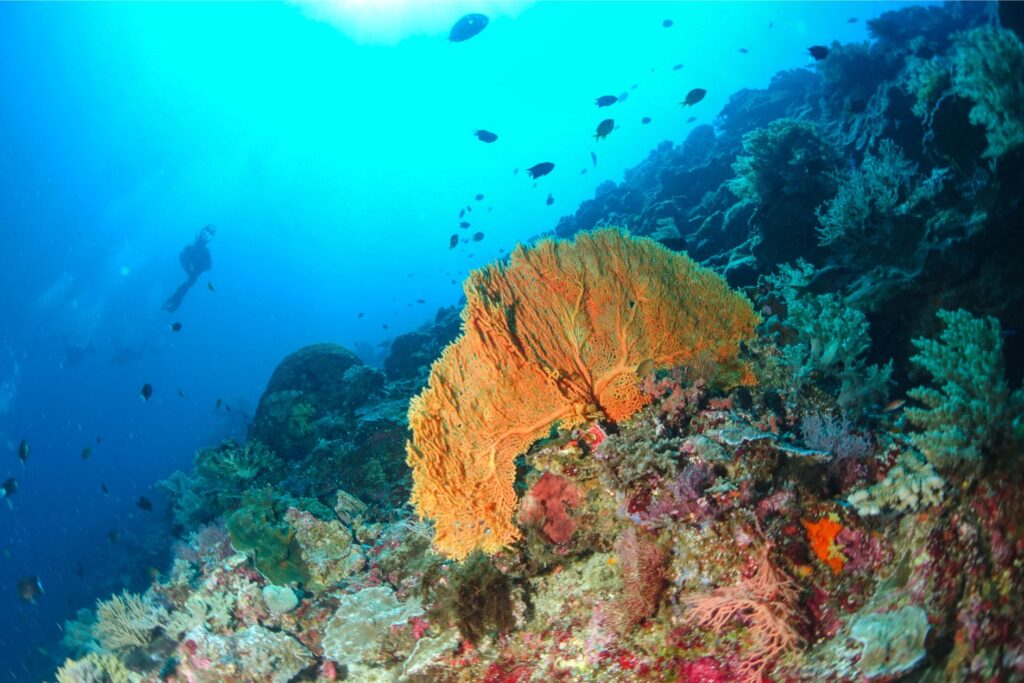
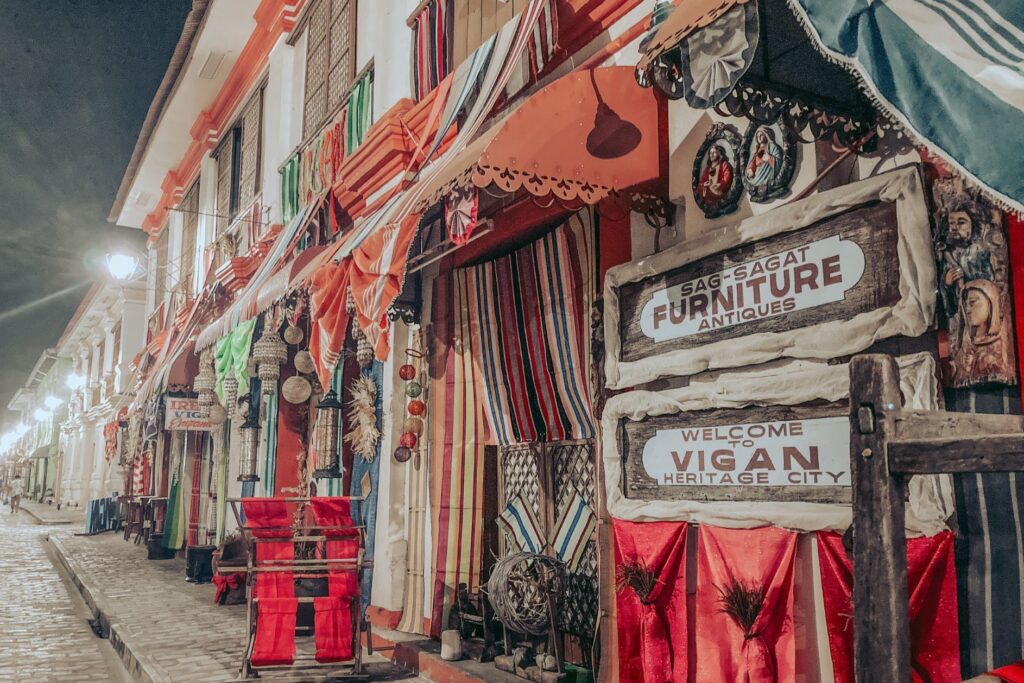
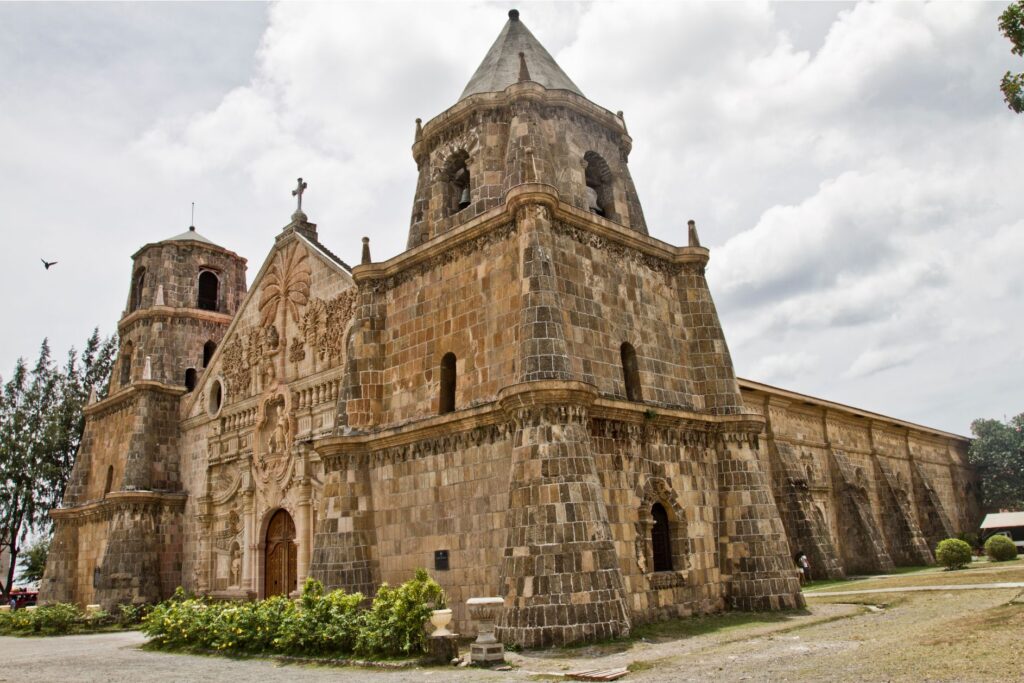
There are over 1,100 world heritage sites spread across more than 165 countries. New ones are added every year, and some may be removed from the list for various reasons.
Number of UNESCO listed sites: 6.
Top world heritage sites:
- Baroque Churches of the Philippines.- Mount Hamiguitan Range Wildlife Sanctuary.
- Tubbataha Reefs Natural Park.
- Rice Terraces of the Philippine Cordilleras.
- Historic City of Vigan.
- Puerto-Princesa Subterranean River National Park.
Interesting facts about Philippines

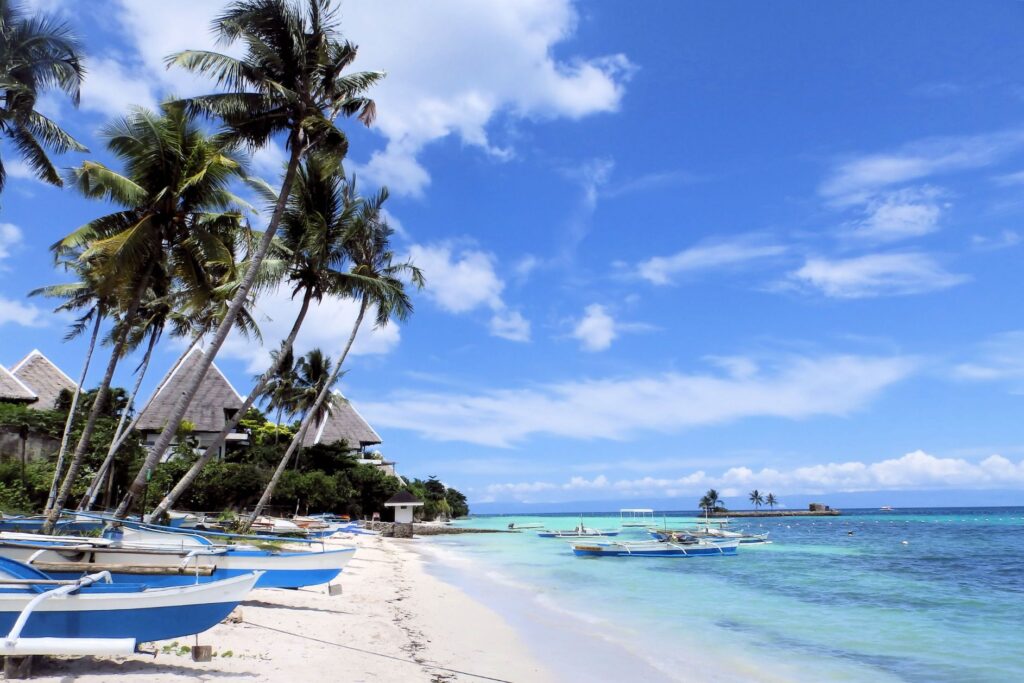
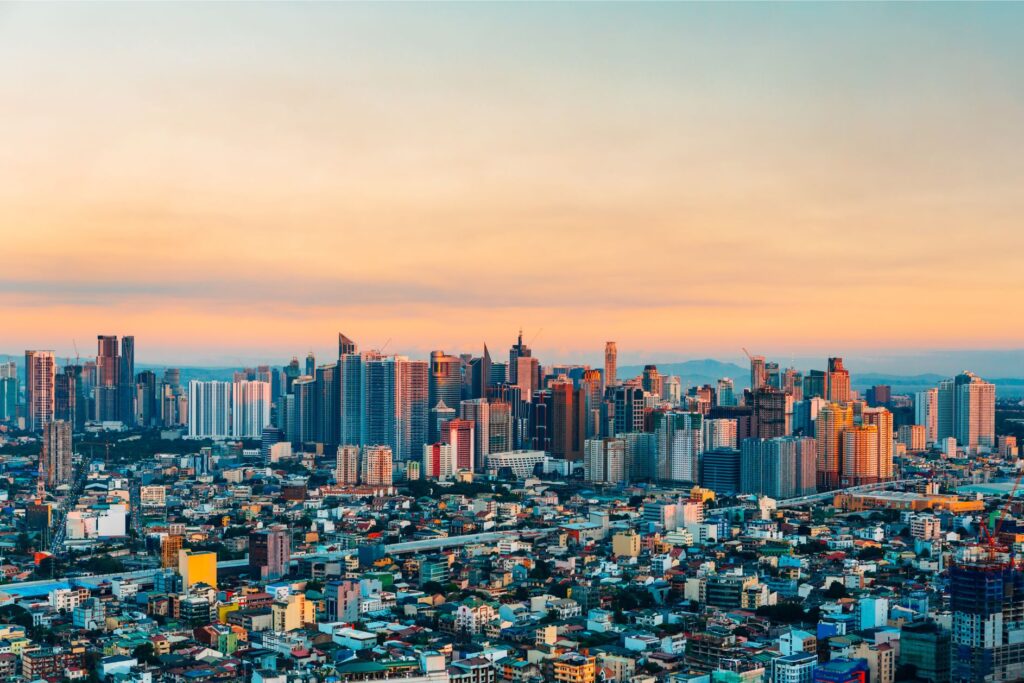
- Many Filipinos have Spanish names. This is not because of 400 yeas of colonialism but because of a 19th-century Spanish decree that required them to use Spanish surnames to make the census easier.
- The Philippines is home to Taal Volcano, it's considered one of 16 Decade Vocanoes. Decade Volcanoes are identified as the most dangerous volcanoes on the planet. The Philippines is also in the middle of the typhoon belt and get hit by an average of 20 a year. The country is vulnerable to recurrent natural disasters including land slides, flooding, earthquakes, volcanic eruptions and torrential rains and winds.
- Philippines is a natural paradise and the only place you can find several endangered species like the second tiniest primate, the nocturnal tarsier monkey, which you can see in Bohol.
Further reading: N/A.
Philippines Travel tips
Socket type: A / B / C. Guide to socket types.
Weekend days: Sunday.
Driving: Cars drive on the Right.
Local taxi apps: Grab.
Travel Guides: Lonely Planet.
Languages spoken: Tagalog (official) and English (official); eight major dialects - Tagalog, Cebuano, Ilocano, Hiligaynon or Ilonggo, Bicol, Waray, Pampango, and Pangasinan.
Basic words and phrases in the main language:
N/A, English is an official or widely spoken language.Find a hotel in Philippines
Booking.comBook tours and activities:
More about Philippines on Solo Female Travelers
Coming soon.Did you spot any errors? We do our best to keep this information updated and accurate, but things change. If you saw anything that is not right, let us know so we can fix it: [email protected].
About the Solo Female Travel Safety Index
Safety matters to solo female travelers, you told us so in our annual Solo Female Travel Survey, where year after year, women prove that this is their most important concern when traveling solo.
We wanted to do something about it, so we built these country-specific pages where you can find reviews and scores for 7 key variables affecting the safety of women traveling solo.
Variables
- Risk of scam
- Risk of theft
- Risk of harassment
- Attitudes towards women
- UK Travel Advisory
- US Travel advisory
- Global Peace Index (GPI)
Informing OSAC
The Solo Female Travel Safety Score is used by the Overseas Security Advisory Council for including safety concerns for women travelers in their country security reports; OSAC is a partnership between the U.S. Department of State and private-sector security community.
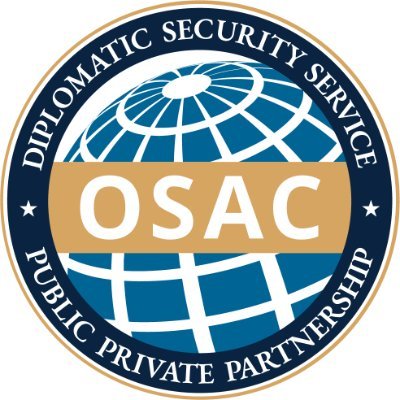
How to use the Safety Index
On this page, you will find the country score and the personal opinions on safety of other women traveling solo.
You can sort the comments by:
- The level of experience traveling solo of the reviewer (beginner = <5 trips solo, Intermediate = 5 to 10 trips solo, Experienced = >10 trips solo).
- The age of the traveler.
- Whether they are a visitor or local.
- The date they were posted.
The safety scores range from 1 to 4 with 1 being the safest and 4 being the most dangerous for solo female travelers.
Thus, the lower the score, the safer the country.
Looking for more safety resources?
This entire website is devoted to helping women travel solo. Check out the links below to learn more:
Solo Female Travel Stats: Results from the the largest, most comprehensive and only global research study on solo female travel trends, preferences and behaviors published.
Thanks to Jacobo Vilella for creating the Solo Female Travelers Safety Index ❤️

